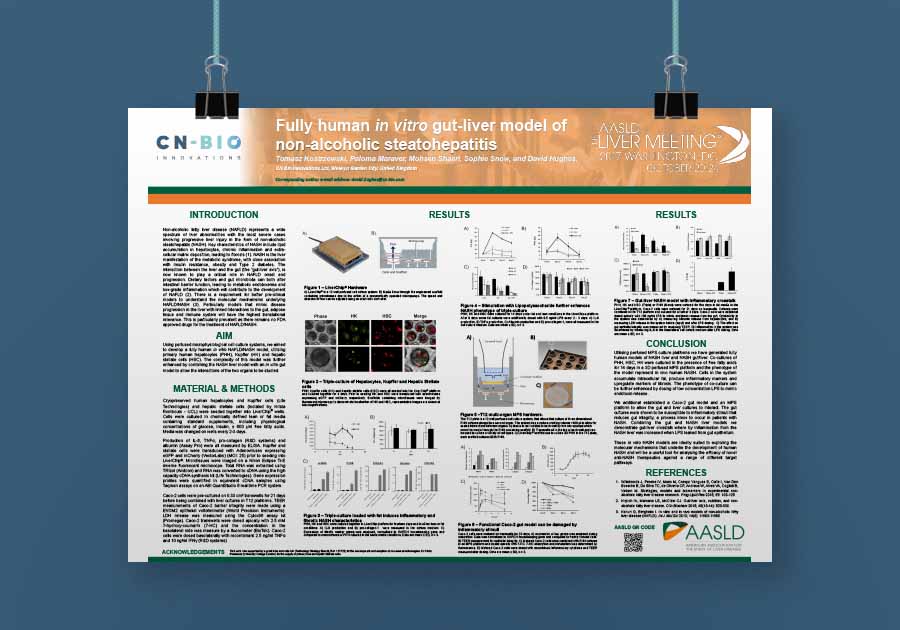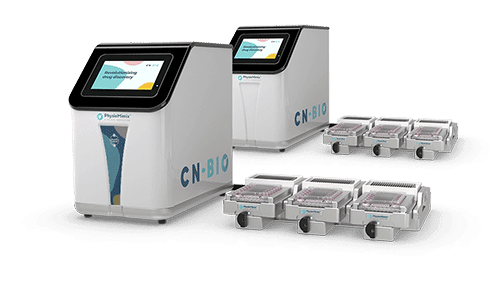Resource > Posters >
Fully human in vitro gut-liver model of non-alcoholic steatohepatitis
American Association for the Study of Liver Diseases (AASLD)
Filed under: Disease modeling and NAFLD/NASH

Kostrzewski et al
Non-Alcoholic Fatty Liver Disease(NAFLD) represents a wide spectrum of liver abnormalities with the most severe cases involving progressive liver injury in the form Non-Alcoholic Steatohepatitis (NASH). Key characteristics of NASH include lipid accumulation in hepatocytes, chronic inflammation and extracellular matrix deposition, leading to fibrosis. NASH is the liver manifestation of the metabolic syndrome, with close association with insulin resistance, obesity and Type 2 diabetes. The interaction between the liver and the gut (the “gut-liver axis”), is now known to play a critical role in NAFLD onset and progression. Dietary factors and gut microbiota can both alter intestinal barrier function, leading to metabolic endotoxemia and low-grade inflammation which will contribute to the development of NAFLD.
There is a requirement for better preclinical models to understand the molecular mechanisms underlying NAFLD/NASH. Particularly models that mimic disease progression in the liver with linked interactions to the gut, adipose tissue and immune system will have the highest translational relevance. This is particularly prevalent as there remains no FDA approved drugs for the treatment of NAFLD/NASH.
Using perfused microphysiological cell culture systems, we aimed to develop a fully human in vitro NAFLD/NASH model, utilizing primary human hepatocytes (PHH), Kupffer (HK) and hepatic stellate cells (HSC). The complexity of this model was further enhanced by combining the NASH liver model with an in vitro gut model to allow the interactions of the two organs to be studied.
Utilizing perfused MPS culture platforms, we have generated fully human models of NASH liver and NASH gut/liver. Combining the gut and NASH liver models, we demonstrate gut-liver crosstalk where by inflammation from the NASH liver was increased when LPS leaked from gut epithelium. These in vitro NASH models are ideally suited to exploring the molecular mechanisms that underlie the development of human NASH and will be a useful tool for analyzing the efficacy of novel anti-NASH therapeutics against a range of different target pathways.

